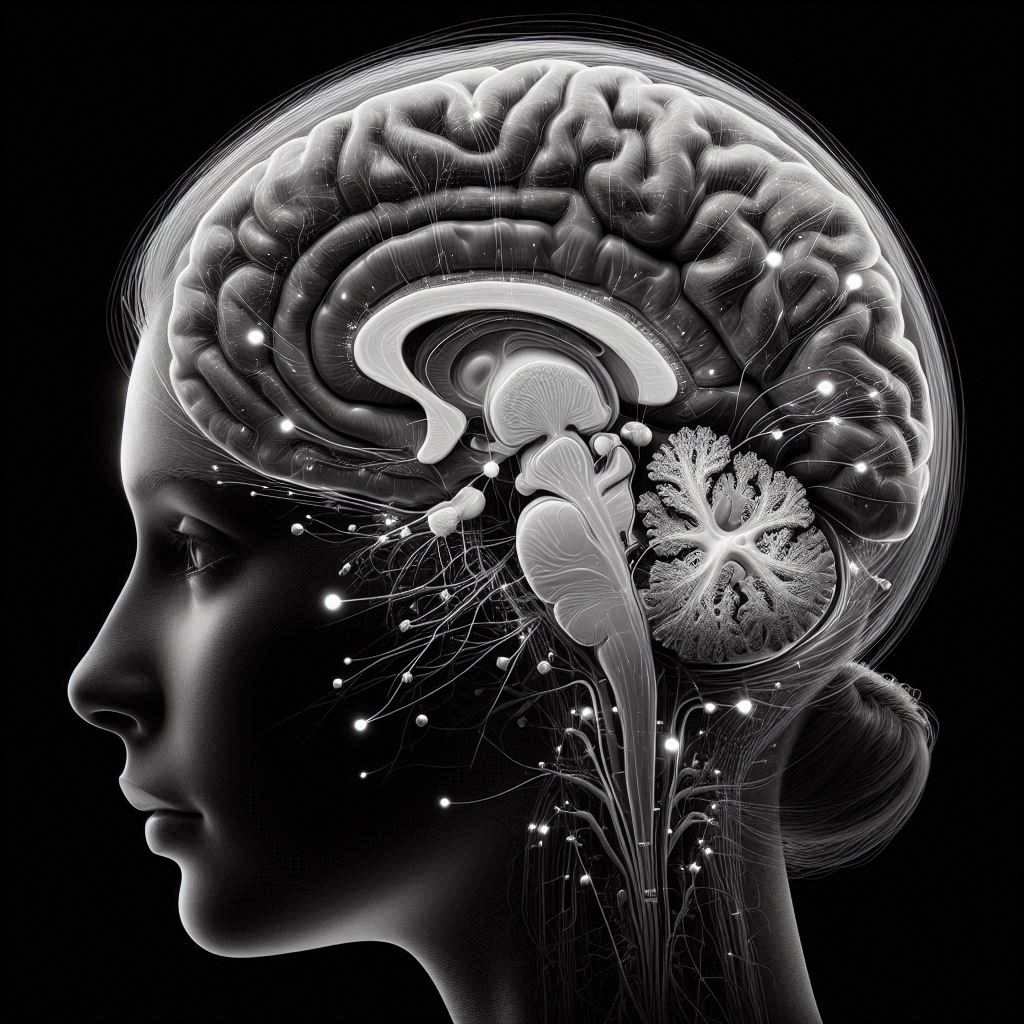Caught in the grip of anxiety while navigating a crowded mall or waiting in line at a busy coffee shop?
Anxiety can strike anywhere, especially in public settings, leaving you feeling overwhelmed and desperate for relief. Fortunately, there are simple and discreet techniques that can help you calm your nerves swiftly.
In this post, we’ll explore practical strategies like deep breathing, grounding exercises, and subtle mindfulness practices—tools designed to quickly ease anxiety in public spaces. Whether you’re dealing with a sudden panic attack or just general unease, these techniques can offer a welcome respite, helping you regain control and continue your day with confidence.
Understanding Anxiety in Public Places
Many individuals experience anxiety when in public places, and this can significantly impact their well-being. It’s crucial to understand the underlying causes of this anxiety and the effects it can have on individuals.
Causes of Anxiety in Public Places
Anxiety in public places can stem from various factors, including social expectations, fear of judgment, past traumatic experiences, or a lack of control over the environment. People with social anxiety disorder may feel a heightened sense of self-consciousness and worry about negative evaluations from others. This fear may lead to avoidance behavior, where individuals try to escape or steer clear of situations that trigger their anxiety.
Effects of Anxiety on Individuals
The effects of anxiety in public places can be far-reaching. Individuals may experience physical symptoms such as rapid heartbeat, sweating, trembling, or shortness of breath. These physical sensations can exacerbate the emotional distress, leading to a cycle of heightened anxiety. Additionally, persistent anxiety in public settings can impact a person’s self-esteem, relationships, and overall quality of life. It may hinder social interactions, limit participation in activities, and contribute to feelings of isolation.
Understanding the causes and effects of anxiety in public places is crucial for developing coping strategies and seeking support. By addressing these underlying factors, individuals can work towards managing their anxiety and improving their overall well-being.
For more information on managing anxiety in public places, refer to resources like Social Anxiety Disorder: More Than Just Shyness and 6 Tips for Dealing With Anxiety in Public Places.
Techniques for Quick Anxiety Relief
Dealing with anxiety in public places can be challenging, but there are effective techniques that can provide quick relief. Here are some techniques you can try:
Deep Breathing Exercises
Deep breathing exercises are a simple yet powerful way to calm anxiety. By focusing on your breath, you can help regulate your emotions and reduce feelings of panic. Techniques like the 4-7-8 breathing method or equal breathing can quickly bring a sense of calmness in stressful situations. Here are 8 breathing exercises you can try right now.
Grounding Techniques
Grounding techniques involve bringing your awareness back to the present moment, helping to reduce feelings of detachment or overwhelming anxiety. Engaging in physical activities like putting your hands in water, touching items around you, or going for a short walk can help ground you in reality. Read more about 30 grounding techniques to quiet distressing thoughts.
Positive Self-Talk and Affirmations
Positive self-talk and affirmations can shift your mindset from negative to positive, boosting your self-confidence and reducing anxiety levels. By repeating affirmations like “I am capable of overcoming challenges” or “I am strong in my struggles,” you can instill a sense of empowerment and optimism. Check out these positive affirmations for anxiety relief.
Engaging the Senses
Engaging your senses can help redirect your focus away from anxious thoughts and into the present moment. Embrace activities that involve all five senses – sight, touch, hearing, smell, and taste. Simple practices like connecting with nature, savoring your favorite meal, or listening to soothing music can bring a sense of calmness. Learn more about engaging the senses for anxiety relief.
Listening Meditation
Listening meditation involves focusing on external sounds to center your mind and promote relaxation. By tuning in to calming music, nature sounds, or guided meditations, you can create a peaceful mental space and reduce anxiety levels. Give this 10-minute meditation for anxiety a try to experience a moment of serenity in a busy world.
Incorporating these techniques into your daily routine can provide you with valuable tools to manage anxiety effectively, especially when you find yourself in challenging public situations.
Preparation Strategies for Public Situations
Preparing for public situations can help alleviate anxiety and boost confidence. By implementing effective strategies, you can create a sense of readiness that can make a significant difference in how you feel in public environments.
Creating a Comfort Zone
Creating a comfort zone involves establishing a mental and physical space where you feel at ease and in control. One way to achieve this is through deep breathing and relaxation exercises. Practice slow, deep breathing to calm your mind and body. Visualizing positive outcomes can also help shift your focus from anxiety to a sense of confidence.
Another essential aspect of creating a comfort zone is familiarizing yourself with the environment you will be in. Whether it’s a public speaking event or a social gathering, knowing the layout and surroundings can reduce uncertainty and enhance your comfort level. Arrive early to allow yourself time to acclimate to the space and make any necessary adjustments to feel more at ease.
Carrying a Personal Calm Kit
Having a personal calm kit can be a beneficial tool for managing anxiety in public settings. Your calm kit can include items that bring you comfort and relaxation, such as stress-relief toys, a favorite scented lotion, headphones to listen to calming music, or a small journal to jot down your thoughts.
In addition to physical items, consider including grounding techniques in your calm kit. These can be practical strategies like mindfulness exercises, affirmations, or quick stress-relief techniques that you can use discreetly in public. Having these tools readily available can provide a sense of security and empowerment in potentially stressful situations.
By incorporating these preparation strategies into your routine, you can proactively address anxiety in public situations and cultivate a sense of control and confidence. Remember that preparation is key, and taking proactive steps can significantly impact how you navigate and experience public environments.
Seeking Professional Help and Support
When anxiety becomes overwhelming, seeking professional help and support can be vital in managing and alleviating its impact on your daily life. Therapeutic techniques and counseling options can provide valuable tools and strategies to navigate through anxiety in public settings effectively.
Therapeutic Techniques
Therapeutic interventions offer a structured approach to addressing and coping with anxiety symptoms. Techniques such as mindfulness meditation and progressive muscle relaxation have shown to be effective in reducing anxiety levels and promoting a sense of calmness. Cognitive reframing, journaling, behavior activation, and stress reduction exercises are valuable tools that can be learned and practiced to manage anxiety triggers when in public spaces. These techniques empower individuals to challenge negative thought patterns, regulate emotions, and build resilience in confronting anxiety-inducing situations.
To further enhance the effectiveness of therapeutic techniques, working with a trained therapist or counselor can provide personalized guidance and support in developing coping mechanisms tailored to individual needs. Cognitive-behavioral therapy (CBT), interpersonal therapy (IPT), and exposure therapy are common therapeutic approaches utilized in the treatment of anxiety disorders. These therapies focus on identifying and modifying negative thinking patterns, improving interpersonal relationships, and gradually exposing individuals to fear-inducing stimuli in a controlled manner to reduce anxiety responses.
Seeking professional help through therapeutic interventions not only equips individuals with practical tools to manage anxiety but also offers a safe space to explore underlying emotional issues contributing to anxiety symptoms. Therapists and counselors provide guidance, empathy, and validation, creating a supportive environment for individuals to work through their fears and insecurities.
Counseling and Therapy Options
In addition to therapeutic techniques, counseling and therapy options serve as valuable resources for individuals seeking long-term support in managing anxiety. Different types of therapy, such as cognitive-behavioral therapy (CBT), psychodynamic psychotherapy, and applied relaxation training, offer comprehensive approaches to addressing anxiety symptoms at the root level. These therapies focus on understanding the underlying causes of anxiety, exploring past experiences, and developing coping strategies to navigate present challenges.
Moreover, therapy tools such as cognitive restructuring, exposure therapy, and behavioral experiments provide individuals with practical skills to confront anxious thoughts and behaviors in public settings. By working collaboratively with a therapist or counselor, individuals can gain insights into their thought processes, emotions, and behaviors, enabling them to make positive changes and lead a more fulfilling life free from the constraints of anxiety.
Overall, seeking professional help and support through therapeutic techniques and counseling options can empower individuals to overcome anxiety and regain control over their lives. By accessing the guidance and expertise of trained professionals, individuals can develop resilience, self-awareness, and effective coping strategies to navigate public spaces with confidence and ease.
Conclusion
Anxiety in public places can be overwhelming, but with the right techniques, it is possible to navigate through it effectively. By incorporating strategies such as deep breathing, visualization, and physical exercises, individuals can manage their anxiety and feel more confident in public speaking situations.
Remember to Practice Consistently
Regular practice is crucial for overcoming public speaking anxiety. The more you practice speaking in front of others, the more comfortable and confident you will become. Start small, perhaps by presenting to a mirror or a close friend, and gradually work your way up to larger audiences.
Use Relaxation Techniques
Incorporating relaxation techniques like deep breathing and muscle relaxation can help calm your nerves before speaking in public. Taking deep, slow breaths and focusing on relaxing each muscle group can reduce physical tension and promote a sense of calmness.
Visualize Success
Visualizing success can be a powerful tool in managing anxiety. Picture yourself delivering a successful speech, receiving positive feedback, and feeling confident throughout the presentation. This mental imagery can boost your self-assurance and help alleviate anxiety.
Seek Support and Feedback
Don’t hesitate to seek support from friends, family, or a professional counselor to address your public speaking anxiety. Constructive feedback and encouragement can provide valuable insights and encouragement to improve your speaking skills and confidence level.
Practice Self-Compassion
Remember to be kind to yourself throughout the process of managing public speaking anxiety. Treat yourself with empathy and understanding, acknowledging that it’s normal to feel anxious in such situations. Celebrate small victories and progress to build your confidence gradually.
By implementing these strategies and staying consistent in your efforts, you can effectively alleviate public speaking anxiety and feel more at ease when speaking in front of others. Overcoming anxiety takes time and effort, but with dedication and practice, it is possible to become a more confident and composed public speaker.








